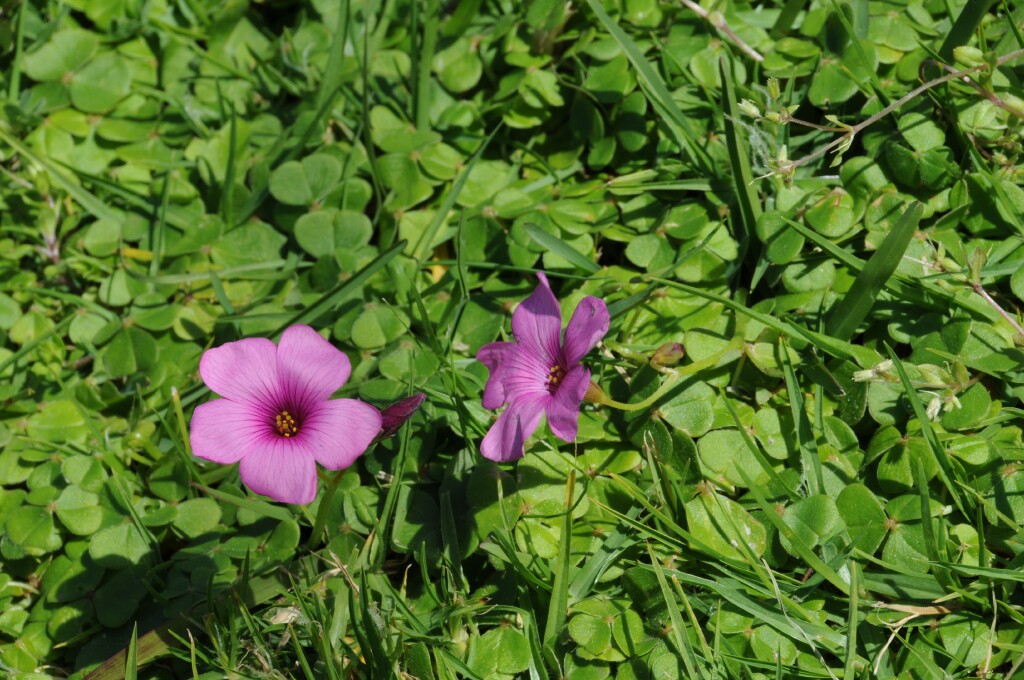Oxalis brasiliensis
G.Lodd. ex Drapiez Brazilian Wood-sorrelHerb with stems not evident; bulbs globose, 10–13 mm long, tunics whitish or straw-coloured, strongly vertically ribbed, the outer tunics (5–)8-13-nerved; bulbils formed from old bulbs on stolons to 15 cm long. Aerial propagules (highly reduced leafy shoots) sometimes produced at bracteole region of scape. Leaves basal, 3-foliolate; leaflets subsessile, cuneate to obcordate, 6–40 mm long, 6–45 mm wide, emarginate, mid to dark green, sparsely pubescent above, moderately pubescent below, margins ciliate, sinus to about a fifth the length of leaflet, lobes with rounded apices to c. 12 mm apart; petioles 4–10 cm long, sparsely hairy; stipules conspicuous, long and narrow, tapering into petioles. Inflorescences basal, 1–2(–3)-flowered; peduncles longer than leaves, sparsely hairy; pedicels 0.5–3 cm long, hairy. Sepals lanceolate, 5–7 mm long, sparsely hairy, green with 2 orange apical calli. Petals 18–30 mm long, pale pink, deep pink or purple-pink with outer surface paler. Capsule not developed in Australia. Sep.-Oct.
GipP, HSF. Also naturalised SA, NSW. Native to South America. Currently known only from weedy mown nature strips in some south-eastern (e.g. Armadale, Bentleigh, Caulfield North, Elsternwick, Mentone) and north-eastern Melbourne suburbs (e.g. Heidelberg).
Horne et al (2013) comment that only 5 % of the population of O. brasiliensis naturalised in United States of America (Alabama) produces aerial propagules. Of the 6 specimens held at the National Herbarium of Victoria, only one has aerial propagules.
 Spinning
SpinningHorne, H.E.; Barger, T.W.; Nesom, G.L. (2013). Two South American species of Oxalis (Oxalidaceae) naturalised in Alabama and the USA, first report. . Phytoneuron 54: 1–7.




